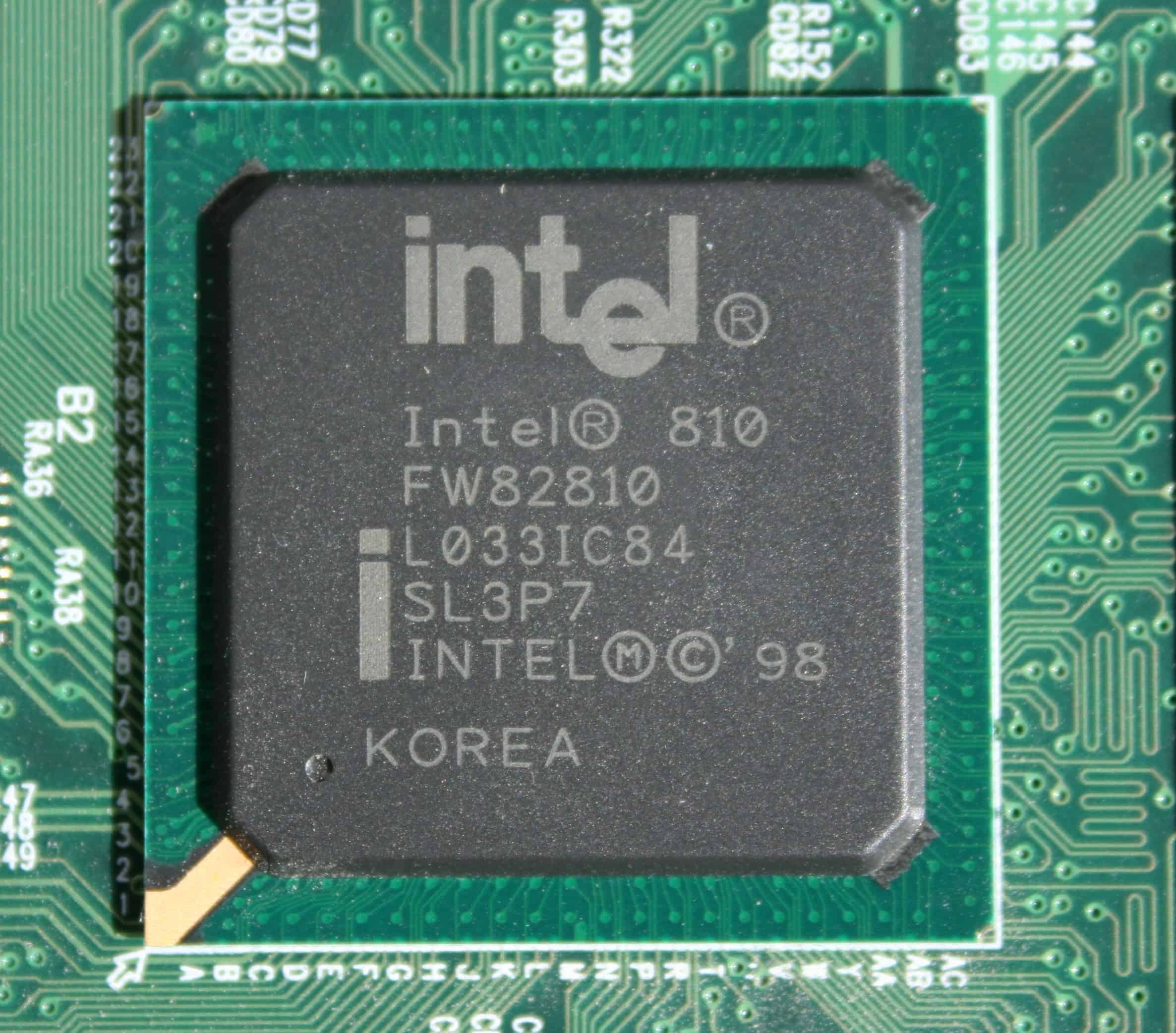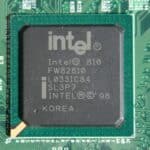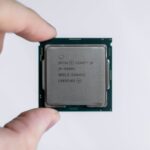Intel has secured a major boost for its semiconductor manufacturing efforts. The U.S. Department of Commerce has awarded Intel up to $7.86 billion in direct funding through the CHIPS and Science Act. This substantial investment aims to strengthen American leadership in chip production and enhance national security.
The funding will support Intel’s commercial semiconductor projects across multiple states. It forms part of a broader initiative to revitalize domestic chip manufacturing. The U.S. government recognizes the critical importance of advanced semiconductors for economic growth and technological innovation.
This agreement marks a significant milestone in the implementation of the CHIPS Act. It reflects the Biden-Harris Administration’s commitment to rebuilding America’s semiconductor ecosystem. The investment in Intel is expected to create thousands of high-tech jobs and foster regional development in the areas where Intel operates.
Intel’s CHIPS Act Funding: A Boost for US Semiconductor Manufacturing
The US semiconductor industry received a significant boost with the recent announcement of Intel securing $7.86 billion in funding from the CHIPS and Science Act. This substantial investment is aimed at bolstering domestic semiconductor manufacturing and reducing reliance on foreign suppliers.
Intel’s Ohio Megaproject
The funding will primarily support Intel’s ambitious project in Ohio, where the company is building a massive semiconductor fabrication complex. This “megafab” will house two state-of-the-art chip factories, contributing to the production of advanced chips crucial for various industries.
Benefits for the US Semiconductor Industry
This investment is expected to have several positive impacts on the US semiconductor landscape:
- Increased Domestic Production: The project will significantly increase the production of chips within the United States, reducing dependence on overseas manufacturing.
- Job Creation: The construction and operation of the Ohio megafab will create thousands of high-paying jobs in the region.
- Technological Advancement: The funding will support research and development efforts, leading to advancements in semiconductor technology and innovation.
- Supply Chain Resilience: By boosting domestic production, the US can strengthen its supply chain resilience and reduce vulnerabilities to disruptions.
- Economic Growth: The project is expected to stimulate economic growth in Ohio and contribute to the overall US economy.
The CHIPS Act’s Impact
The CHIPS and Science Act, signed into law in 2022, aims to revitalize the American semiconductor industry. This funding for Intel is one of the significant steps toward achieving that goal.
The act provides billions of dollars in incentives for semiconductor companies to build and expand manufacturing facilities within the United States. It also supports research and development efforts to maintain US leadership in semiconductor technology.
What Does The CHIPS Act Pay For
The CHIPS act is an investment in basic and advanced research, commercialization, and education and training programs in artificial intelligence, semiconductors, quantum computing, advanced communications, biotechnology and advanced energy, amounts to $100 billion.
The CHIPS Act, or Creating Helpful Incentives to Produce Semiconductors and Science Act, is a comprehensive piece of legislation aimed at boosting the American semiconductor industry. It authorizes a massive amount of funding, roughly $280 billion, with $52.7 billion specifically appropriated for several key areas:
1. Domestic Semiconductor Manufacturing:
- Subsidies: A significant portion of the funding, $39 billion, is dedicated to providing subsidies to semiconductor companies for building and expanding manufacturing facilities within the United States. This includes:
- Construction of new fabs: Building state-of-the-art fabrication plants for producing advanced chips.
- Expansion of existing facilities: Increasing production capacity at current semiconductor manufacturing sites.
- Equipment upgrades: Modernizing equipment and processes to enhance chip production capabilities.
2. Research and Development:
- $13.2 billion is allocated for research and development in the semiconductor field. This includes:
- Advanced research: Funding for universities and research institutions to explore new materials, designs, and manufacturing techniques.
- Workforce development: Training programs to develop a skilled workforce for the semiconductor industry.
3. Investment Tax Credit:
- The CHIPS Act offers a 25% investment tax credit for capital expenses related to semiconductor manufacturing and equipment. This incentivizes companies to invest in new facilities and upgrades.
4. Other Provisions:
- Wireless Technology: $1.5 billion is dedicated to promoting and deploying wireless technologies that use open and interoperable radio access networks.
- International collaboration: $500 million is allocated for international information and communications technology security and semiconductor supply chain activities.
- Job creation: The act emphasizes creating good-paying jobs, with requirements for Davis-Bacon prevailing wage rates for facilities built with CHIPS funding.
Overall, the CHIPS Act aims to:
- Increase domestic semiconductor production: Reduce reliance on foreign suppliers and strengthen the US supply chain.
- Promote innovation: Support research and development to maintain US leadership in semiconductor technology.
- Create jobs: Generate high-paying manufacturing and research jobs in the semiconductor sector.
- Boost economic growth: Stimulate the economy and strengthen US competitiveness in the global technology landscape.
A Step Toward Technological Independence
The investment in Intel’s Ohio project marks a crucial step toward greater technological independence for the United States. By increasing domestic semiconductor production, the US can reduce its reliance on foreign suppliers and strengthen its position in the global technology landscape.
This initiative is expected to have long-term benefits for the US economy, national security, and technological competitiveness. As the project progresses, it will be interesting to see the full impact of this investment on the US semiconductor industry and beyond.
Key Takeaways
- Intel receives $7.86 billion in U.S. government funding for semiconductor manufacturing.
- The investment aims to boost American chip production and technological leadership.
- This funding is part of a larger effort to strengthen the domestic semiconductor industry.
Impact of the Chips Act on Intel and U.S. Semiconductor Leadership
The Chips Act will significantly boost Intel’s manufacturing capabilities and strengthen America’s position in the global semiconductor industry. This investment aims to enhance national security, drive innovation, and create economic opportunities.
Strategic Investment in Semiconductor Manufacturing
Intel plans to invest nearly $90 billion in U.S. facilities by 2030. This massive investment will expand Intel’s manufacturing capacity for leading-edge semiconductors. The company will focus on developing advanced nodes like Intel 18A and Intel 3.
These new facilities will produce chips for both commercial and government use. The investment includes:
- New fabs in Ohio and Arizona
- Upgrades to existing facilities in New Mexico and Oregon
- Research and development for next-generation technologies
The Chips Act funding will accelerate Intel’s timeline for these projects. It will help the company compete with global rivals and regain its technological edge.
Enhancing American Innovation and Technology Leadership
The Chips Act aims to revitalize U.S. leadership in semiconductor technology. Intel will use the funds to:
- Develop cutting-edge manufacturing processes
- Invest in research for future chip designs
- Collaborate with universities and research institutions
These efforts will help maintain America’s competitive advantage in key technologies. They will also create high-skilled jobs and foster a robust semiconductor ecosystem.
Intel’s advancements will benefit other U.S. tech companies. It will provide them access to leading-edge chips for various applications, from artificial intelligence to quantum computing.
National Security and Economic Implications
The Chips Act funding for Intel has significant national security implications. It will:
- Reduce reliance on foreign chip manufacturers
- Ensure a secure supply of critical components for defense systems
- Protect sensitive technologies from potential foreign interference
Economically, the investment will create thousands of direct and indirect jobs. It will stimulate local economies and strengthen the U.S. semiconductor supply chain.
The funding also includes provisions for workforce development. This will help train the next generation of semiconductor engineers and technicians, ensuring long-term competitiveness.
Regional Growth and Development Initiatives
Intel’s CHIPS Act funding will drive significant economic growth across multiple U.S. states. The company plans major investments in existing and new facilities, creating thousands of jobs and strengthening the domestic semiconductor ecosystem.
Investments in Arizona, New Mexico, Ohio, and Oregon Facilities
Intel will allocate the $7.86 billion in funding across its U.S. manufacturing sites. In Arizona, the company will expand its Chandler campus, adding new fabs for leading-edge chip production. New Mexico will see upgrades to Intel’s Rio Rancho facility, enhancing its capabilities for advanced packaging technologies.
Ohio will benefit from continued development of Intel’s new “mega-site” near Columbus. This greenfield project aims to establish a world-class semiconductor manufacturing complex. In Oregon, Intel plans to modernize and expand its existing D1X research factory in Hillsboro.
These investments will boost Intel’s domestic manufacturing capacity and technological leadership in key areas like AI chip production.
Economic Benefits and Job Creation
The CHIPS Act funding for Intel is expected to generate substantial economic impact. The company projects the creation of over 10,000 new long-term jobs across its expanded facilities. These roles will span engineering, technician, and support positions.
Construction phases will provide additional employment, with estimates of 20,000+ temporary jobs. Local communities will see increased economic activity from Intel’s expanded presence.
The investments aim to strengthen the U.S. semiconductor supply chain, reducing reliance on overseas manufacturing. This aligns with the Biden-Harris administration’s goals of boosting domestic high-tech production and competitiveness.
Long-Term Vision for Semiconductor Ecosystem
Intel’s strategy extends beyond immediate facility expansions. The company seeks to build a robust semiconductor ecosystem across its U.S. locations. This includes:
- Partnerships with universities for research and workforce development
- Fostering local supplier networks to support chip production
- Investing in startups and innovation hubs near manufacturing sites
The goal is to create self-sustaining “innovation clusters” around Intel’s facilities. These ecosystems will drive technological advancements and maintain U.S. leadership in semiconductor design and manufacturing.
Intel’s long-term vision aligns with the CHIPS Act’s aim of securing America’s position in the global semiconductor industry for decades to come.







